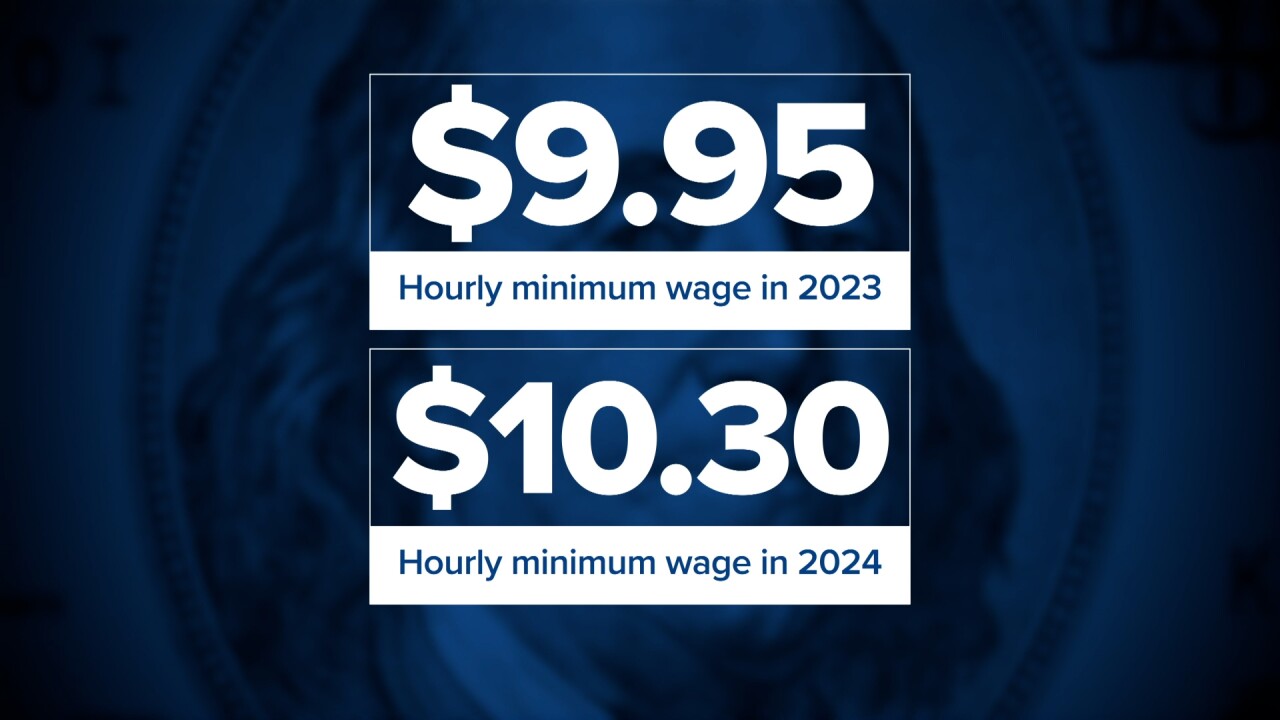HELENA — Monday is the first day of 2024 – and also the first day that Montana’s minimum wage will be higher than $10 an hour.
On Jan. 1, the minimum wage will rise 35 cents, from $9.95 to $10.30. Since 2006, Montana’s minimum wage has been automatically increased to account for inflation, after voters approved Initiative 151, adding a yearly cost-of-living adjustment.
In a reflection that the rate of inflation has started to slow, 2024’s increase is smaller than the 75-cent jump at the start of 2023 and the 45-cent increase in 2022. However, it is higher than any other single year since 2009.

Todd O’Hair, president and CEO of the Montana Chamber of Commerce, says there may be a limit on how many workers see an immediate change because of the increase. He said many Montana businesses – including those that offer the entry-level jobs people generally associate with the minimum wage – have raised their salaries well above the minimum to try to attract workers. He believes most of the minimum-wage jobs getting a raise next week will be for workers in restaurants and others who receive tips.
“With the shortage that we've seen in our workforce, a lot of businesses have been forced to pay above and beyond the minimum wage,” said O’Hair. “So when you think about the waiters and the servers in restaurants and stuff, they're the ones that are going to be seeing probably the largest sort of increase in their income as a result of this minimum wage increase.”
Someone working full-time at the new minimum wage would make about $21,400 a year. May 2022 statistics from the U.S. Bureau of Labor Statistics showed median wages at or below that level for a few job categories – primarily waiters and waitresses and other restaurant workers. A number of other categories had median wages just above the $10.30 level.
O’Hair said the Chamber sees the automatic increase as “less than ideal” for businesses, because it doesn’t take real-time economic considerations into account. He said this year, the minimum wage will be just one of a number of inflationary factors businesses are dealing with.
“Businesses are reluctant to raise prices because they want to remain competitive,” he said. “But this is going to be a pinch point that I think you'll start to see flowing through the business and to the consumer early in 2024, as they have to accommodate this increased cost of doing business.”
But advocates say the increase could make a big difference for Montanans who are also struggling with rising costs, especially for things like food, child care and housing.
The Montana Budget and Policy Center put together an interactive housing affordability map. Based on this year’s data, it estimates minimum-wage workers in any part of the state would need to work at least 63 hours a week to afford a two-bedroom home at fair-market rent – and as much as 90 hours a week in Gallatin County.
Montana’s minimum wage has increased to account for inflation every year since 2016, and all but two years since I-151 took effect in 2007.




